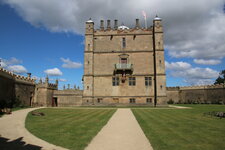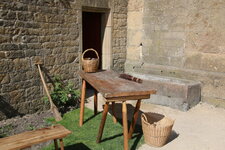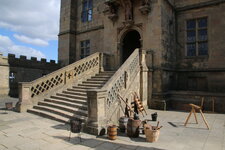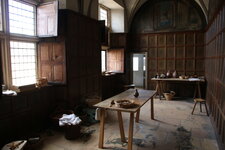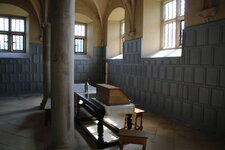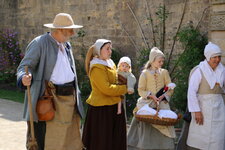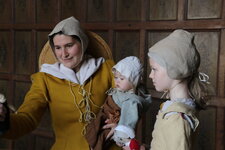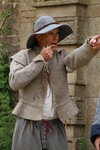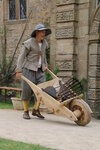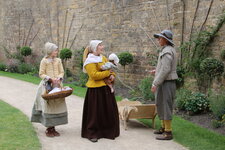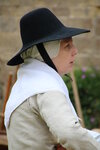Bolsover Castle
The current castle is essentially a 17th century mansion built on the site of a 12th century castle, mostly for Sir Charles Cavendish and then his son William. By 1635, William was Earl of Newcastle and Bolsover was a delightful folly and one of the earliest indoor riding stables, rather than his place of residence. A castle of pleasure and entertainment. His main home was the large estate at Welbeck Abbey, less than 10 miles to the East.
During the Civil War, the Earl fled the country staying in exile on the continent. The castle fell in to a state of disrepair, but not desroyed by the Parlimentarians. In 1659, Sir William died and the title and property passed on to William's brother, Henry. With the restoration of the King, the new Earl returned and carried out work on the castle to bring it back to life.
1635 - The Grand Masque
July 2015, April 2016
The Earl is to visit the castle with some guests, and preparations are under way to receive them, with much speculation as to the purpose of his visit. The steward and housekeeper are ensuring the skeleton staff are busy, getting everything in good order, and awaiting the arrival of the Earl’s furnishings and equipment. When the Earl comes to stay preparations are made weeks in advance to organise everything he might want to be brought from Welbeck.
The secret was the visit of King Charles I on July 30th 1635. Sir William had commisioned a masque, 'Love's Welcome at Bolsover', which was performed in the grounds of the castle.
1660 - Restoring the Little Castle
Oct 1998, May 2000
Following the Restoration, the Earl returned and set about bringing the castle back to life.
We portrayed various workmen and servants, overseen by the Earl's Steward. Carpenters in the yard, servants auditing the Little Castle and maids preparing food for all the staff.
1670 - King Charles' visit
May 2004
Although there is no record of King Charles II visiting the Castle, English Heritage wanted to show what it would have looked like. EH employed ourselves and some other groups to portray the horse guards and the King and Earl.
We worked together to show how the situation might have occured. Although we couldn't represent the huge quantity of people from the Court and servants, we tried to show the hierachy serving the royals. How the servants of the household pass on to the next level and through to people that serve the King himself, who are Lords themselves.

